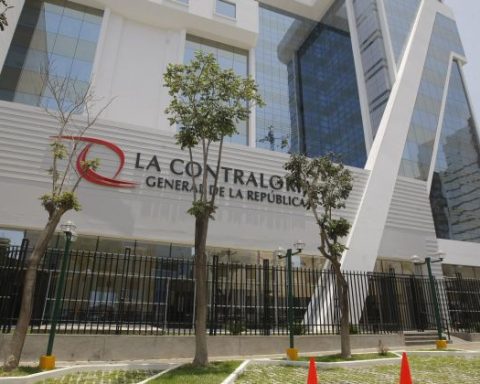For decades, AI has become increasingly present in daily lifebut the November launch of the startup company’s chatbot Open AI marked a inflection point in the general perception of the public and investors.
“From time to time we have platforms that emerge and result in an explosion of new companies. We saw this with the internet and mobile, and AI could be the next platform,” said Shernaz Daver of California-based investment firm Khosla.
The Generative AI, of which ChatGPT is an example, it navigates through oceans of data to deliver original content -a picture, a poem, a 100 word essay- in seconds and with a simple request.
Since its low-key launch at the end of November, ChatGPT has become one of the fastest growing apps ever and made Microsoft and Google will accelerate projects that until now had been closely guarded out of fears that the technology was not ready for public use.
“Just five days after launch, one million users were using ChatGPT – growing 60 times faster than Facebook in reaching one million users,” said Wayne Hu, a partner at SignalFire, another venture capital firm.
“Suddenly all the investors are talking about how ChatGPT could eliminate millions of skilled jobsradically change trillion-dollar industries, and fundamentally change the way we learn, consume, and make decisions.”
The explosion of generative AI comes at an otherwise bleak time for the tech sector, with tens of thousands of layoffs cascading into the world’s largest companies, as well as smaller ones struggling to survive.
“While other categories (of companies) are facing shrinking valuations and seeking capital, generative AI companies are not,” Daver said.
For his part, Hu explained that market values for generative AI companies have skyrocketed, while they have contracted for all others.
– “Difficult to maintain” –
OpenAI, the company that created ChatGPT, was valued by Microsoft at about $30 billion.s even though it continues to burn money at a rapid rate, Hu said.
Entrepreneurs who specialize in generative AI say they no longer need to shout for attention when seeking capital or delve into the details of what they’re trying to deliver.
“This has helped a lot,” said Sarah Nagy, founder of Seek AI, a start-up that allows inexperienced users to extract technical information from databases using everyday language queries.
“Before ChatGPT… I had to explain what generative AI is, and why it is important,” he stressed.
Now the appetite for ChatGPT-like capabilities seems limitless, and not just from investors.
“User demand has increased a lot,” Nagy said. “It is even difficult to maintain, since we are still a small company.”
The entrepreneur wants to grow her team, and according to Daver, while the trend is toward downsizing, “we are currently hiring” in the generative AI sector.
In recent weeks, the tech giants have especially been in the news, most notably Microsoft, OpenAI’s partner and investor, followed by Google, which is trying to hold its own.
But in its shadow, a galaxy of startups also have ideas to offer.
Other recent examples with funding rounds include the Californian company Kognitos, which seeks to automate administrative tasks, as well as the Poly design platform, capable of generating three-dimensional maps or graphics in seconds.
In addition to conventional venture funds, tech giants are on the prowl, such as Google, which has just invested 300 million dollars in the purchase of 10% of Anthropic and its chatbot Claude.
Hu thinks that the ChatGPT “gold rush” could be unprecedented and expand well beyond generative AI because the technology itself minimizes the need for a code programmer or designer to execute ideas.
“Now you no longer need a Stanford PhD in computer science – any developer can build something awesome on top of ChatGPT and other basic models in a weekend,” he explained.
“This wave of AI may be bigger than mobile or cloud, and more on the scale of something like the Industrial Revolution that changed the course of human history,” Hu said.















